Built just a few years prior to the 1929 market crash, the neighbourhood of Hope Valley was designed to be a country club estate surrounding a Donald Ross course. Well outside normal public transport routes, the estate was meant to be accessed exclusively by automobile. Not being a suburb of Durham or Chapel Hill, the country colony aspect of the estate was fairly easy to maintain for many years after the course was completed in 1926. With a great many of the original homes surviving, the entire Hope Valley Historic District is now listed on the National Register of Historic Places.
After piecemeal changes over many decades the club decided it was time to restore the spirit of the original Ross design. Brian Silva completed the work about 15 years ago after focusing on green restoration, tree removal for healthier turf and bunker work which included ~20 new bunkers. It is thought that Maxwell redesigned the greens in the 1930s. Its an odd one considering Maxwell is known for designing intricate greens... which Hope Valley's are not. The greens are now overwhelmingly defined by slope and rely on speed for interest. Truthfully, its a head scratcher. I would have thought the combo of Ross and Maxwell would have produce far more interesting greens. Such imagined contoured greens could only add interest to what is a very well planned housing estate course. A predominate number of holes work the Ross formula of knob to knob golf with many uphill approaches, but the green edges are now disconnected leaving very un-Ross-like ubrupt breaks between fairways and greens.
Any fears of the dreaded housing estate syndrome were quickly squelched. Yes, there are houses throughout the routing and several road crossings, but the impact on the design is quite minimal. The houses are mostly set well back from fairway corridors and green to tee walks remain comfortable. The only awkward walk is from 9 to 10 and that would have been the case even if a road crossing wasn’t involved. Although, I am somewhat surprised a “golfer trail” hasn’t been created to make the walk short as possible.
Hope Valley is not without its share of golf history. The Durham Open was the 4th consecutive win for Byron Nelson during the 1945 season. Nelson would go on to win an incredible 11 consecutive PGA Tour events that year. Two of the wins were contested over matchplay (the PGA and Miami International); the other events were won by an average of nearly seven shots!
A very inviting opener...except for the crossing creek. Truth be told, there is no reason to flirt with the water as a strong lay-up will leave not much more than an 8 iron. It doesn't take much time to realize the greens are quick and that going above the hole, in true Ross fashion, is likely to result in a troublesome two-putt.

The longish short hole 2nd is fairly straight forward. The following hole, a modest length par 4 offers an interesting drive. It is quite easy to drive through the dogleg, but it is an enticing prospect to carve one around the corner.

In the August heat and humidity bermuda grass can be unforgiving in terms of roll. Hope Valley played its full length and of course this means it can be tricky gauging the distance on uphill approaches...of which there are plenty. #4.
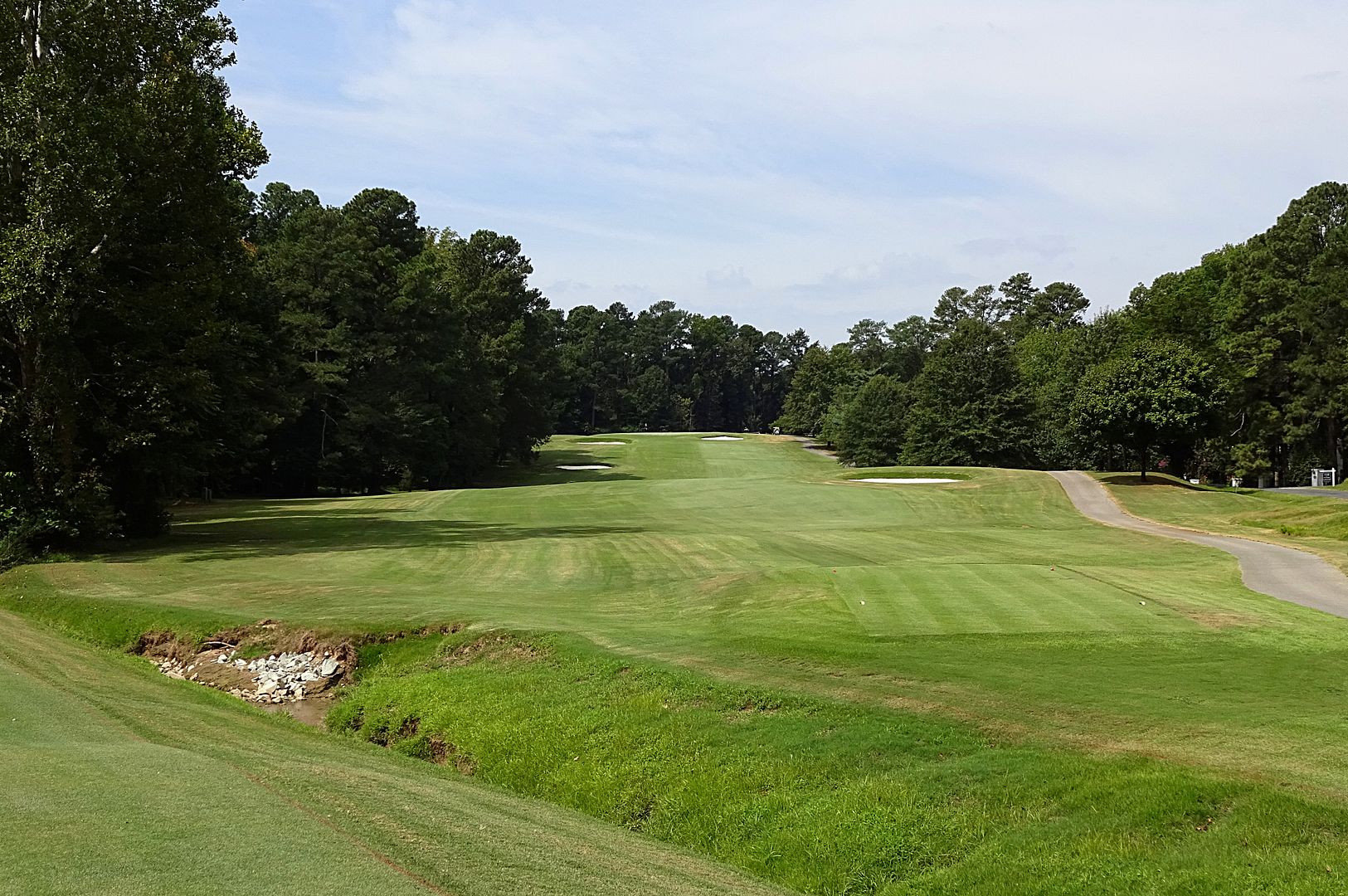
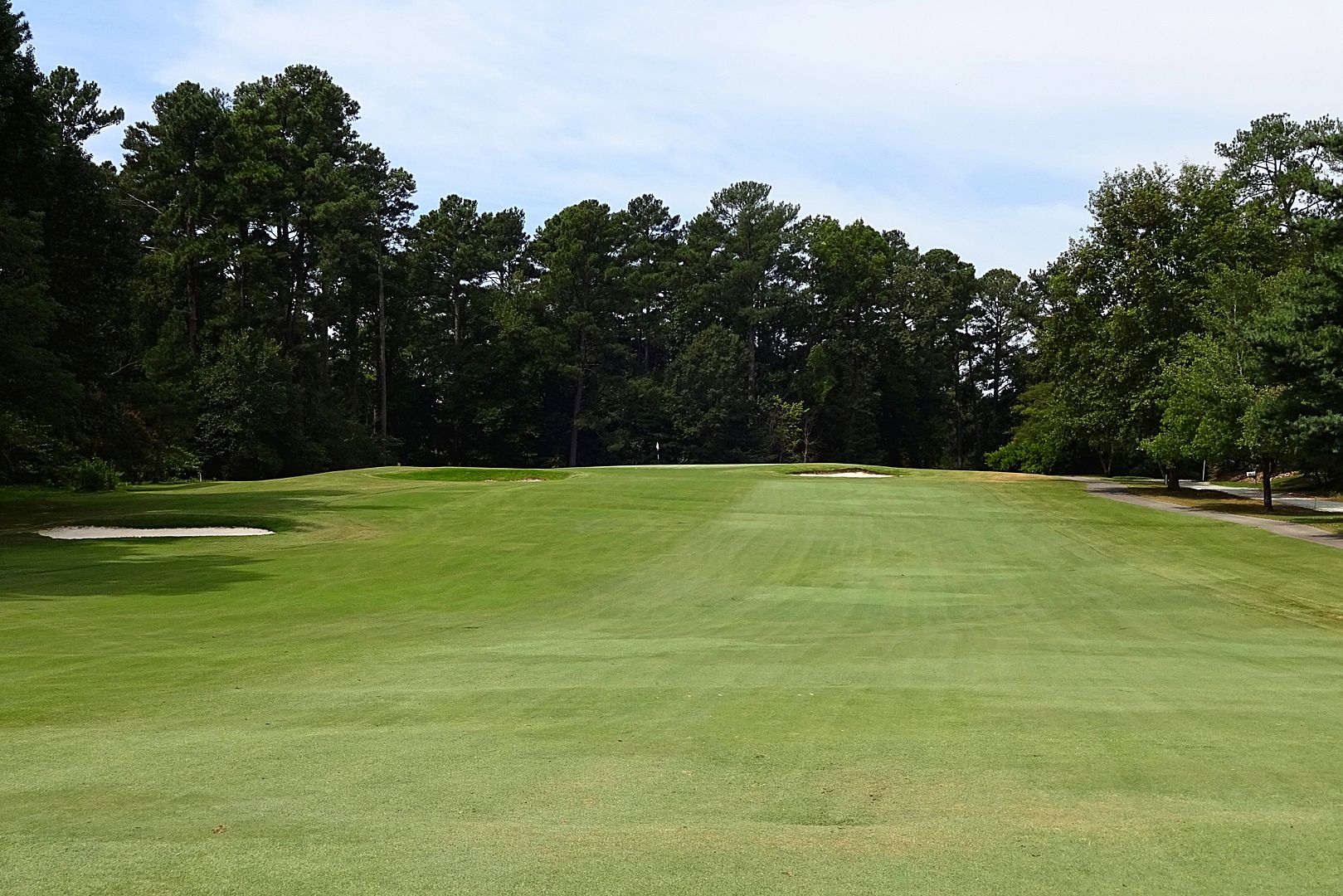
Perhaps the best hole, the 5th slides a bit right. The fairway seems wide open, but there is a creek up the optimal left side.
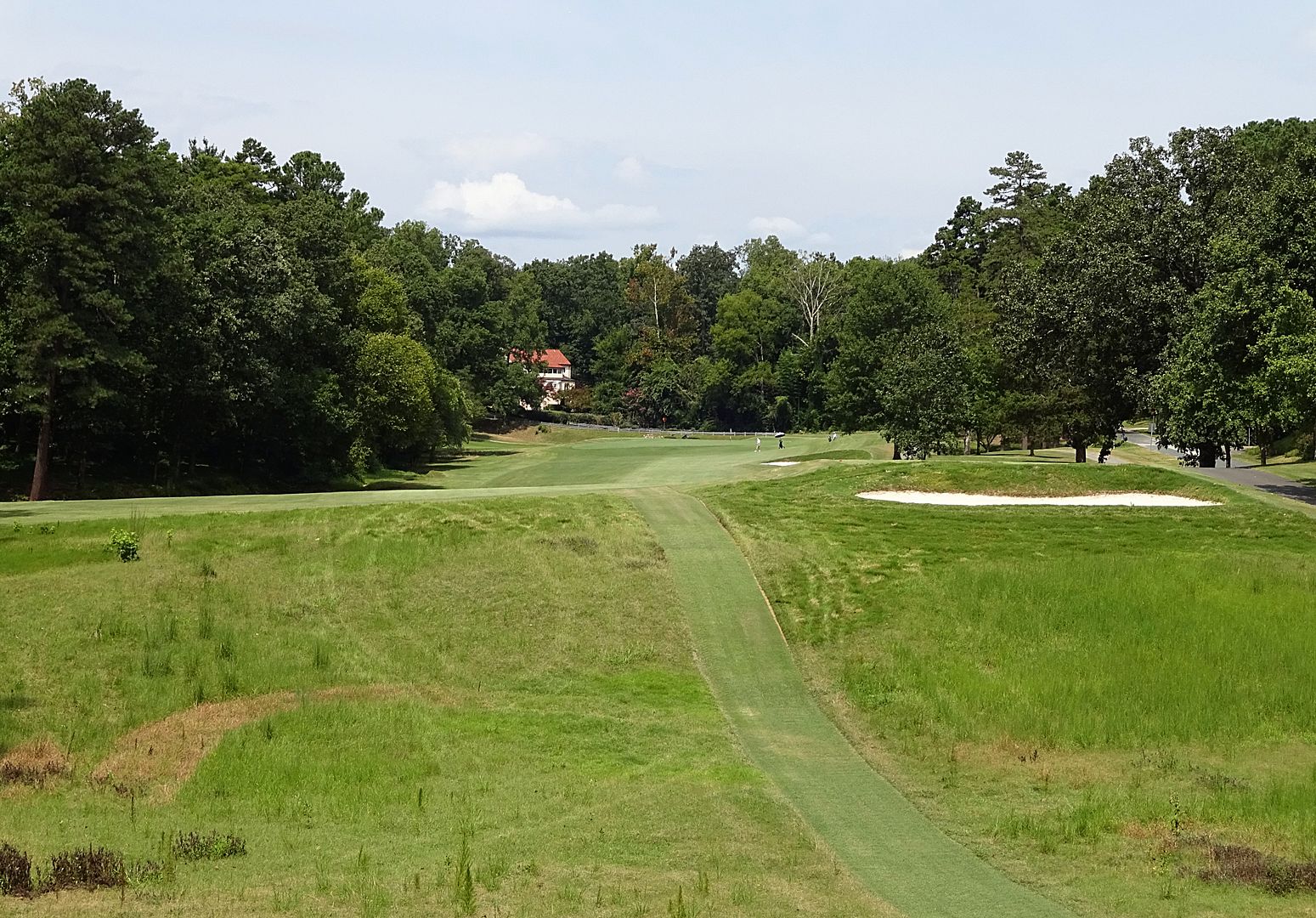
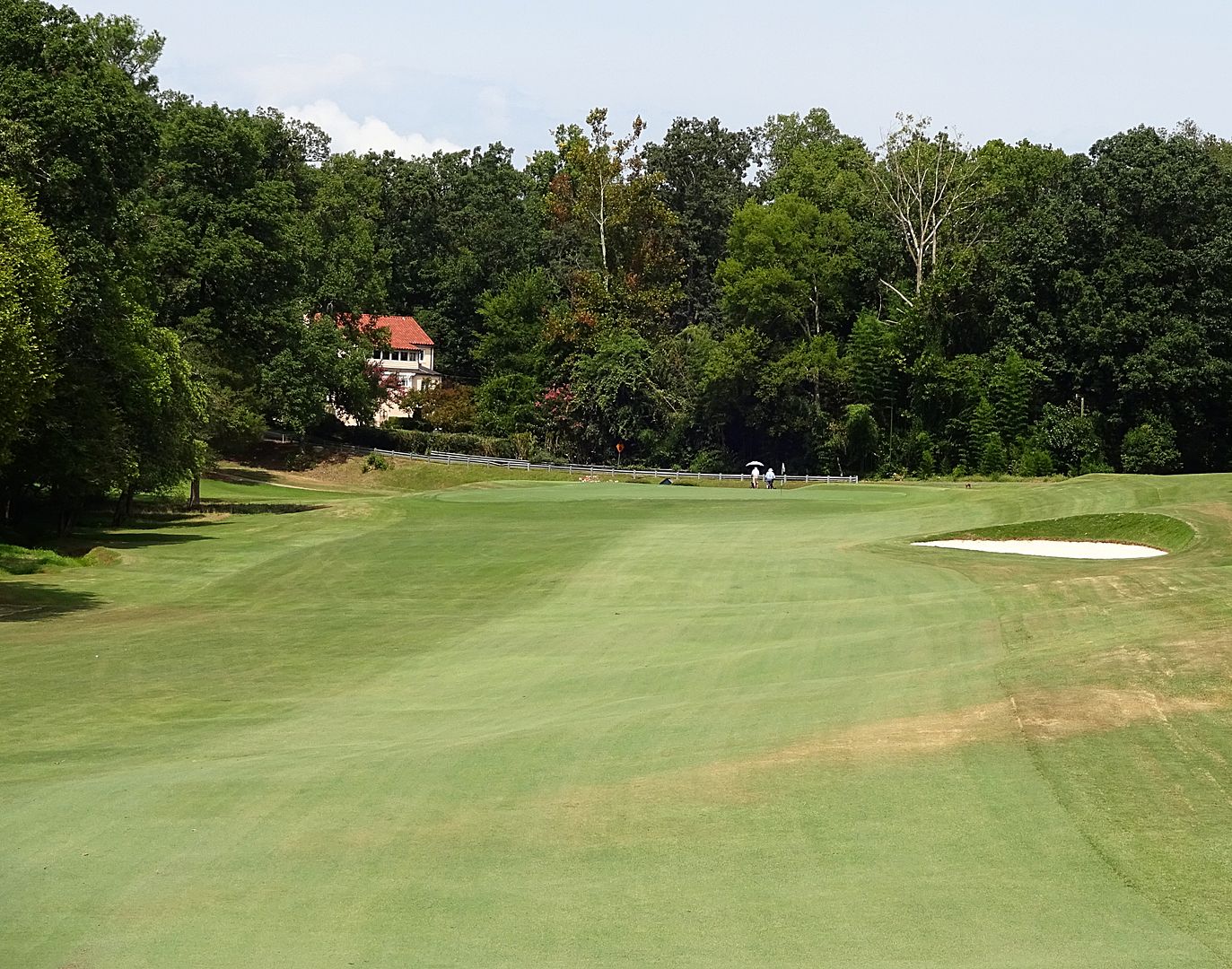
A fine par 3, the uphill nature of the 6th was an oft repeated theme for Ross.
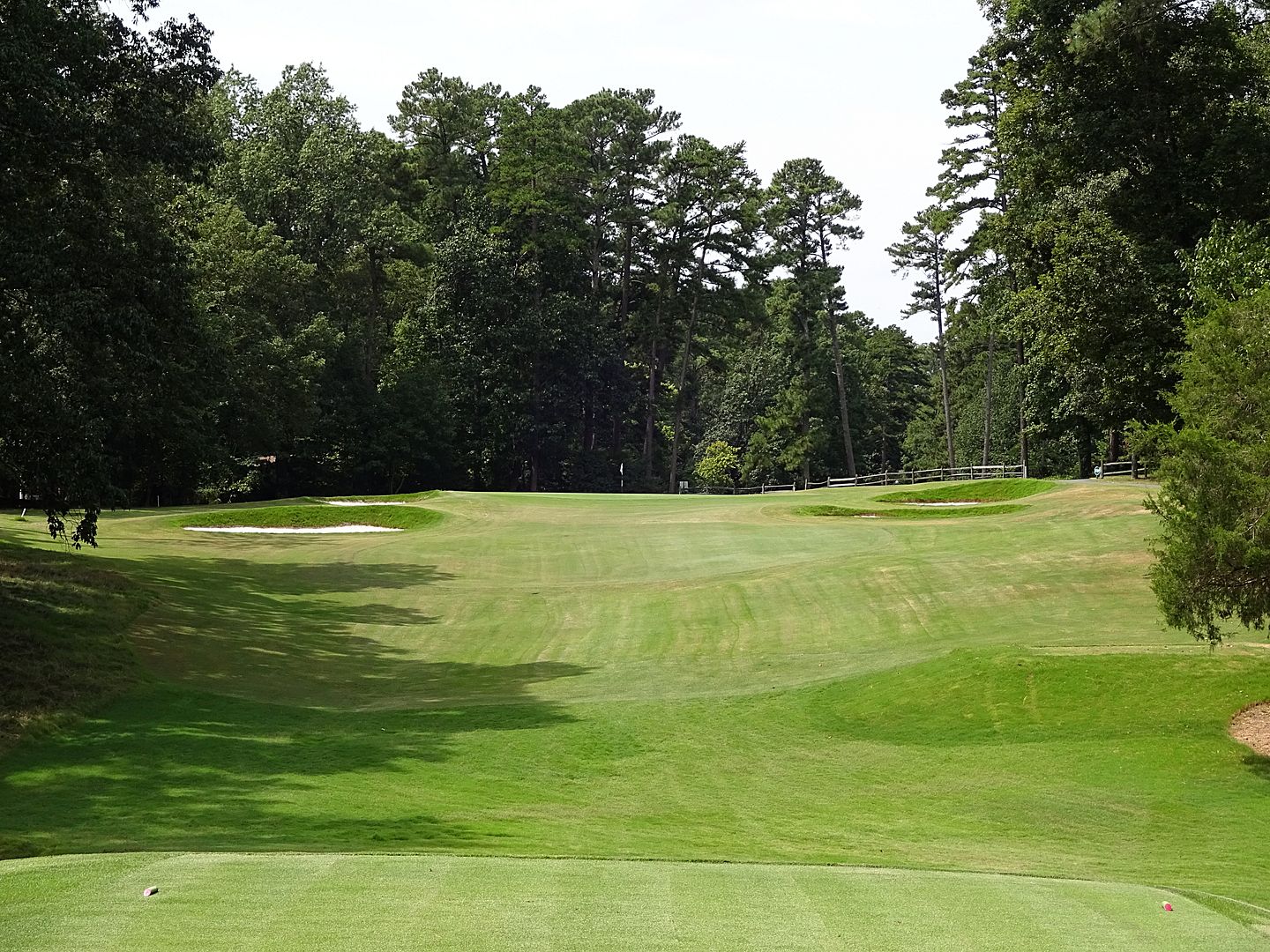
The good golf continues with the 7th, a medium length two-shotter featuring a distinctive L shape green. The tongue of the L is a slippery slope toward the tee and nearly impossible to keep the ball between the hole and the player when hole is near the front of the green.
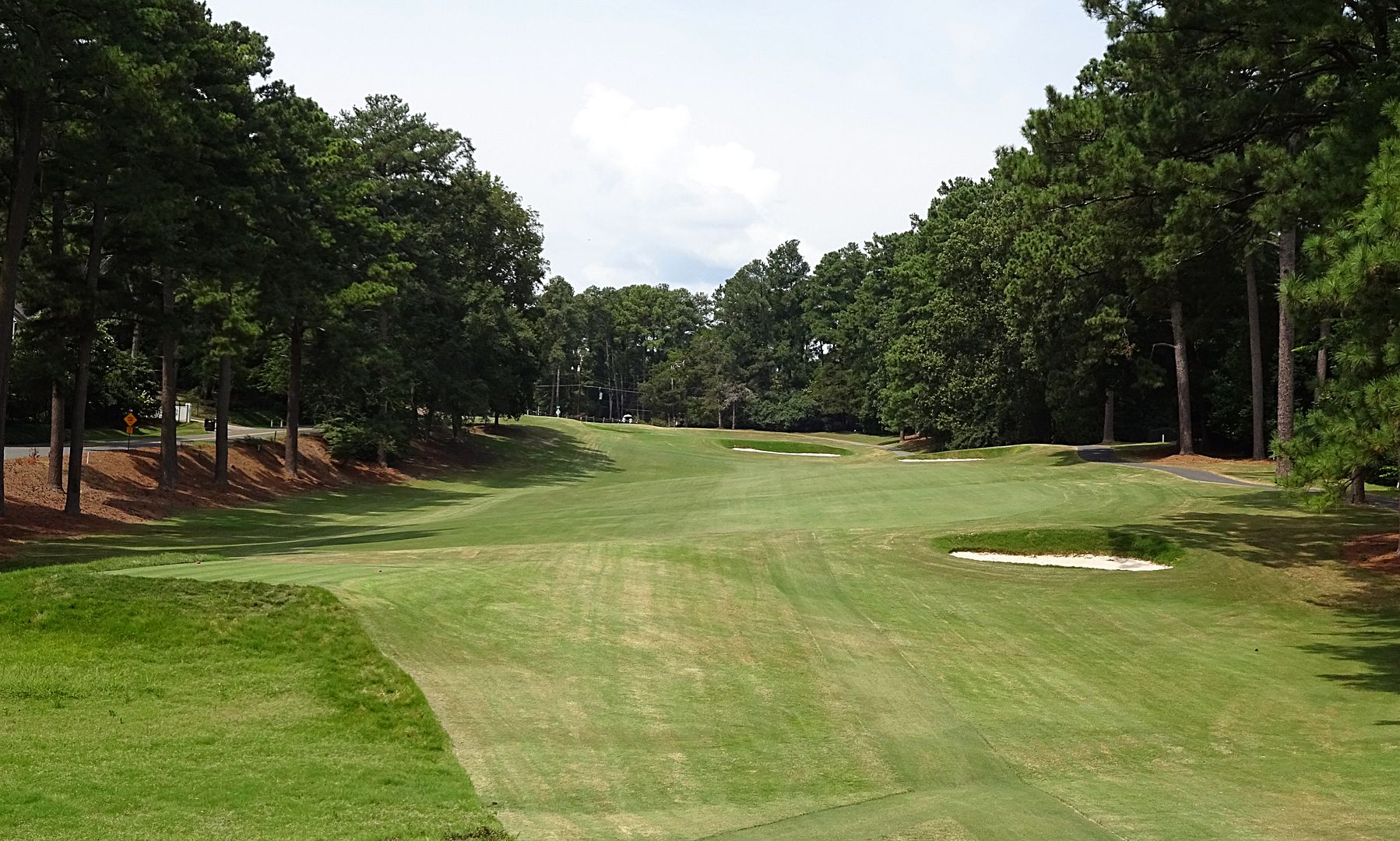
A good par five, however, the 8th follows a well trodden theme of down and up.


Taking us back in the neighbourhood of the house, the 9th is less straightforward than it seems. The green leaks quite severely right.
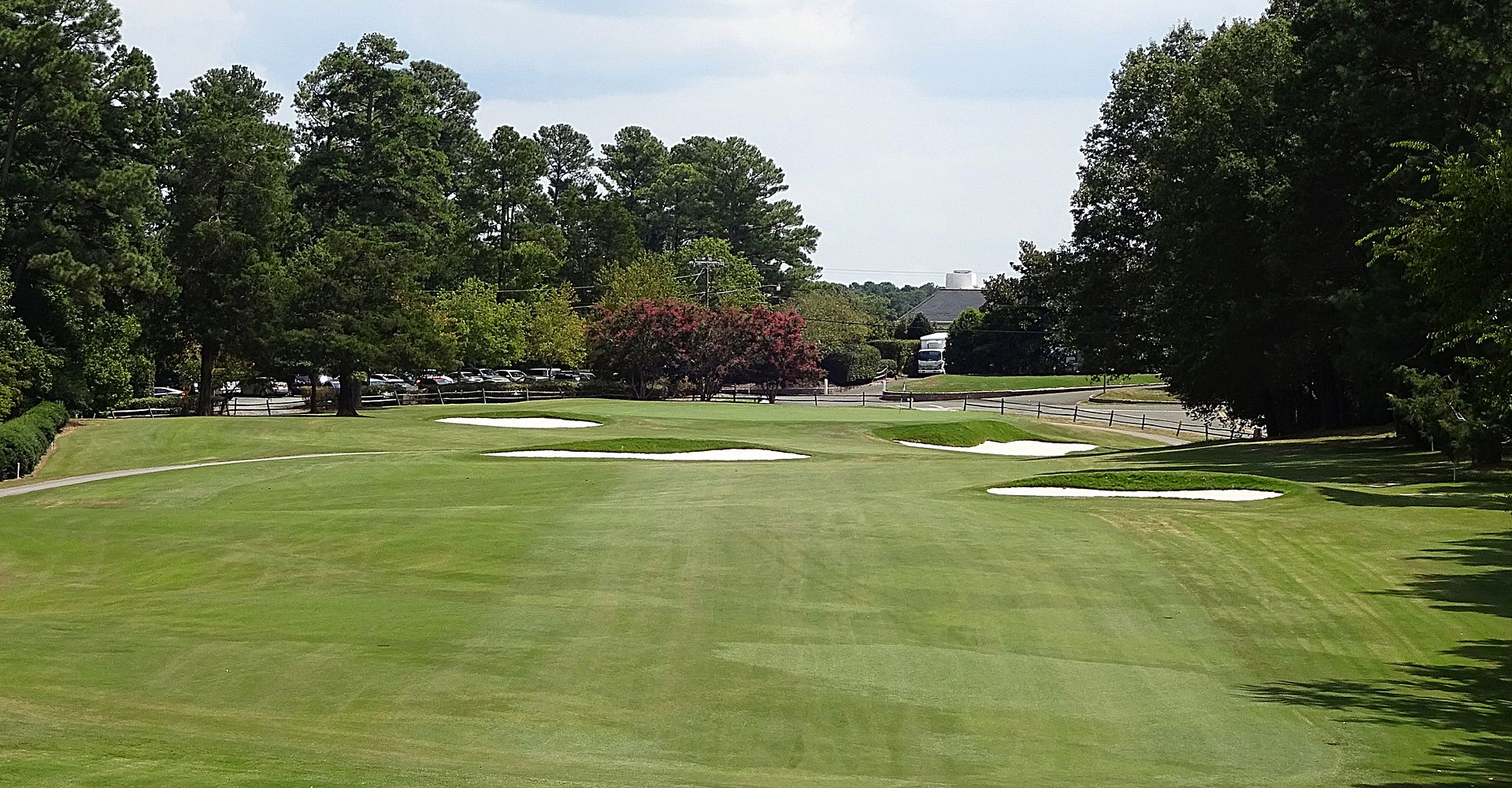

More to follow.
Ciao